A decade and a half of cross-party consensus was swept aside on 4 October when Rishi Sunak cancelled the Manchester leg of HS2. In a special long-read, Ben Flatman talks to a range of industry leaders from the North-west about what the decision means for the city and where it goes next
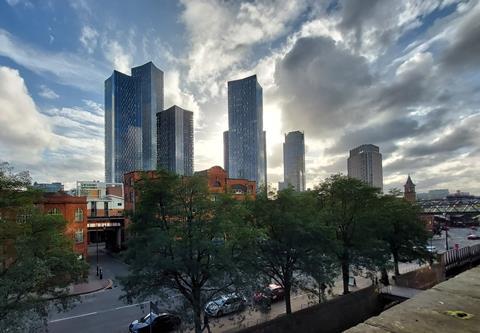
Rishi Sunak’s announcement on 4 October that he was cancelling the HS2 line between Birmingham and Manchester was perceived by many observers as a critical blow to the North-west and the levelling up agenda. Both Andy Burnham and Andy Street, the mayors of the Manchester and West Midlands combined authorities, had lobbied hard to keep the project alive. But Sunak, who had never been keen on HS2 in the first place, was deaf to these last-minute pleas.
Given that it was announced by Gordon Brown and heralded by both David Cameron and Boris Johnson as essential to the country’s future prosperity – and had benefited from widespread cross-party support – the screeching about-turn was also seen as a blow to investor confidence in the UK. How could anyone looking to invest in the country now believe anything that the government said?
The decision-making process that led the UK to this point is opaque at best. Without parliamentary scrutiny, a prime minister who lost the Conservative party leadership race in 2022 and has never led his party into a general election seems to have killed the UK’s largest infrastructure project on a personal whim, appearing then to use the announcement as a political gimmick at his party conference.
As Andy Burnham noted in the wake of Sunak’s announcement: “There’s a world of difference between a transport plan patched together in hotel rooms at a party conference with no input or consultation… and a transport plan that has been worked on for years by northern leaders.”
If this lackadaisical approach to governing an advanced western economy causes concerns among policy-makers and businesses, then it also highlights significant differences in the quality of governance on the built environment at national and regional levels. The supposed “long-term” decision-making emanating from Westminster feels anything but, while the North-west, and specifically Manchester, seem to have had highly strategic and consistent leadership going back decades.
Richard Leese and Howard Bernstein built on the dynamism that already existed within the Manchester city region and helped to catalyse an urban renaissance that is almost unparalleled elsewhere in the UK outside of London. The city-centre population has exploded since the turn of the millennium, from around 5,000, to pushing 100,000, bringing huge levels of residential development.
The city’s virtuous circle of cultural cachet and liveability draws people in, attracting further investment. While all of this is underpinned by the inherent energy in the region, its on-going success would probably have been impossible without coherent political leadership.

Although Burnham, as metro mayor, increasingly dominates Greater Manchester’s national media profile, the city itself continues to have a formidable senior team. Bev Craig took over from Leese as council leader in December 2021, while Joanne Roney succeeded Bernstein as CEO in 2017.
Craig responded to the HS2 decision by highlighting the way in which capacity issues on the network remain unaddressed: “It’s about capacity and connectivity. Our lines are already too busy, passenger numbers continue to grow and by 2050 it’s estimated millions more people will be on the railways.
“The reason that HS2 was such a fundamental part of Northern Powerhouse Rail… is that it’s not feasible for that [growth] to happen on those [existing] lines.”
A brief timeline of HS2
December 2009 Gordon Brown announces plans for a north-south high speed rail link to address capacity on the overcrowded network. The Labour prime minister describes the estimated £20bn investment as “essential”.
May 2010 The Conservative-Liberal Democrat coalition recommits the government to a new-high speed line.
January 2012 The government gives the go-ahead for a Y-shaped network that includes an eastern leg to Leeds. The government declares an intention to build a future link to Heathrow and a connection between Euston and St Pancras to allow through-trains from the North to connect with HS1 and travel onward to Paris.
July 2013 Former Labour cabinet minister Peter Mandelson, an early supporter of the line, claims Labour had only floated HS2 to outflank the Conservatives in advance of the 2010 general election. He writes in the Financial Times: “I now fear HS2 could be an expensive mistake.” The estimated cost rises to £42.6bn.
February 2020 Boris Johnson announces full approval to proceed with construction.
October 2021 The proposed new Euston station is downsized from 11 platforms to 10.
November 2021 The eastern leg to Leeds is cancelled.
March 2022 Transport secretary Mark Harper confirms a two-year delay on HS2. Work on the Euston end of the line is paused.
June 2022 The proposed Goldbourne Link between Manchester and Crewe is cut, in order to save £3bn.
October 2023 Following leaks and days of speculation, Rishi Sunak announces the cancellation of the Manchester leg in a speech to the Conservative Party conference in Manchester. David Cameron describes it as the “wrong” decision and a failure to seize a “once-in-a-generation opportunity”. Labour recommits to Northern Powerhouse Rail, but not to completing HS2.
During the 19th century, Manchester was at the heart of the entrepreneurial culture that drove Britain’s wealth creation. That can-do attitude and entrepreneurialism is still powerfully evident in the city’s spirit today.
Even at its lowest point in the 1970s and early 1980s, there was a never-say-die attitude and, frankly, arrogance to the city, that ensured not just survival, but a remarkable renaissance. That this happened at a time, during the 1980s and 1990s, of almost unprecedented government centralisation and control over the regions makes this an even more astonishing achievement.
Here ��ɫ����TV speaks to some key players in the Manchester city region about the HS2 decision, and what it means for the future.
The idea that in the 21st century we can’t deliver a project that brings our rail network up to the proper standard is deeply disheartening
A real estate expert’s view
Manchester’s remarkable urban renaissance over the past three decades has in part been driven by city centre residential investment and a growing desire from a younger generation to live in the heart of cities. Here Simon Bedford, a partner at Deloitte Real Estate, shares his response to the HS2 decision and his views on the city’s future direction.

Simon Bedford had been a strong supporter of HS2. While there had been a debate around the station configuration in Manchester city centre – Burnham had been pushing for an underground terminus – Bedford says that the decision to cancel was “not anticipated” in Manchester and believes that there was “genuine surprise” from Burnham and Craig
“There was no suggestion the government were going to be as radical as that,” he says of Sunak’s move. He summarises the decision as “highly disappointing” but acknowledges that the lack of clarity around cost had inflicted cumulative damage on the project: “Everyone was guessing about costs, but no one seemed to really know.”
Bedford also recognises that the fact HS2 was consuming so much projected future expenditure had been impacting other critical infrastructure investment decisions for the North, including the much-needed electrification of key rail lines and the creation of the Leeds tram network (Sunak announced £2.5bn for the Leeds project in his conference speech).
“All of these projects were being held up and all that money was going to HS2,” he observes. “They’re all essential pieces of infrastructure and I can see the logic of Sunak’s thinking if that’s what drove the decision. But I’m not sure the government has fully considered the impact of not fully implementing HS2.”
He strongly believes that the city will overcome this setback. “Manchester will dust itself down and come up with five or six great things to do over the next five years, because that’s what it does.” But that does not mean mean he is not disappointed by the decision.
While Bedford welcomes the potential unlocking of funds for other northern transport schemes, he believes it should not have been a case of either/or: “The idea that in the 21st century we can’t deliver a project that brings our rail network up to the proper standard is deeply disheartening.”
He also believes too much emphasis was placed on the “high-speed” aspect of the project, and not enough on the fact that its main driver was addressing capacity issues and modernisation. “This was about bringing our network up to the standard you would expect between Paris and Lyon. We don’t have that, but we should do.”
When asked what the impact is going to be on Manchester, he replies: “Because we have spent all this time developing and designing this piece of infrastructure, we all had it baked in. We assumed it was coming. In terms of investment, investors absolutely thought they were getting improved connections to London and Birmingham.”
Because we have spent all this time developing and designing this piece of infrastructure, we all had it baked in. We assumed it was coming
But he believes that the city will probably not see a major impact. He sees the exploding residential sector in central Manchester as driven by people’s desire to live and work in the city. Of the investment that has happened in the past decade, he says: “I think the vast majority would have happened anyway.”
Following the disappointment of Sunak’s speech, he wants to see a greater focus on the region’s infrastructure: “We’re now looking forward – and I think we’d anticipate further investment in infrastructure that you’d expect for a city this scale.”
He believes expansion of the Metrolink network should be a priority, as well as investment in the “little bit unloved” urban rail system. “Many railway lines could be used more frequently,” he notes.
He would also like to see improvements to Piccadilly and Oxford Road stations, increasing train capacity on some platforms and passenger numbers within the concourses. Station improvements should be focused on giving passengers “a really great experience”, he says.
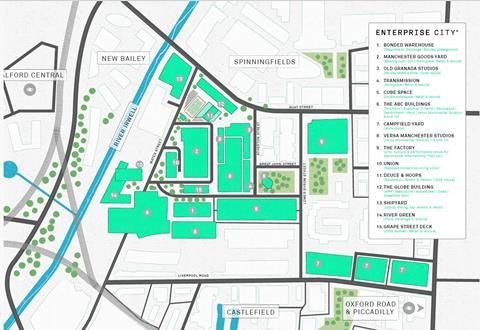
There are now approaching 100,000 residential units in the city centre, but Bedford believes there is room for “a lot more”. He sees one of the city’s key challenges now as managing this growth in terms of “scale, density and placemaking”.
He points to the move towards tall buildings as a response, highlighting how a dense walkable core and the Metrolink facilitate a lifestyle increasingly well suited to a younger generation: “Young people don’t necessarily want to move by car.”
Bedford identifies a number of key factors driving the city’s future growth. Firstly, he points out how over the past 20 years the financial and professional services have consolidated into Manchester: “This sector simply didn’t have that presence two decades ago.”
He highlights Deloitte itself, which has grown from 500 staff in the city in 2008 to 1,300 today, and plans to grow to 1,600. Secondly the tech sector has grown significantly. Booking.com has recently opened an office for 1,300 staff within Allied London’s Enterprise City development. Bedford says these tech companies in turn “build a supply chain”.
What the city has done remarkably well is create a cultural thread that people like. Manchester has managed to cultivate a wanting to be here that has a multiplying impact
He also points to the city’s booming tourism and leisure industry. The presence of Manchester United and Manchester City has not only given the city a huge international profile, but draws in thousands of fans every match day, filling hotels, bars and restaurants, and boosting the wider entertainment and leisure sectors.
Bedford also highlights the opening of the new Factory International cultural and event space as part of Enterprise City, which he says will be “a great addition to the mix.” And he identifies the growing life sciences sector as another key driver for the city’s future economic activity.
Asked about Manchester’s success, Bedford sees the underlying cause as cultural: “What the city has done remarkably well is create a cultural thread that people like. Manchester has managed to cultivate a wanting to be here that has a multiplying impact.”
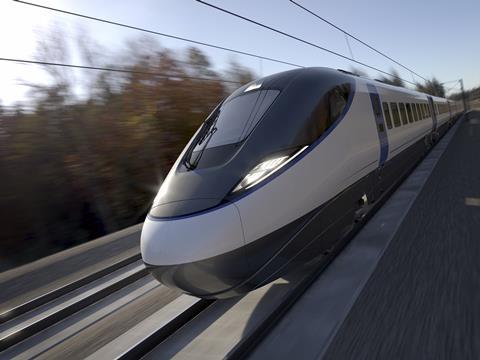
If we were doing more of this stuff we’d be better at costing it. It should be a rolling programme
A transport infrastructure specialist’s view
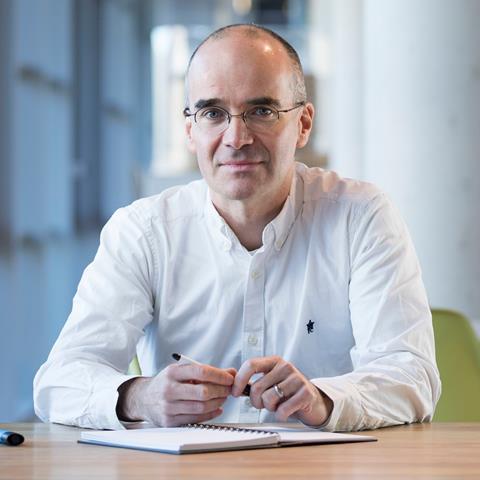
Peter Jenkins is head of transport at BDP and has been heavily involved in transport in Manchester for the past 20 years, including overseeing the upgrade of Manchester Victoria as the main east-west regional rail hub for the city centre a decade ago. Here he discusses the impact of the HS2 decision and identifies some of the key steps needed to ensure the North-west continues to strengthen its infrastructure.
Jenkins points to the Northern Hub project as a key piece of incomplete infrastructure that needs to be finished. This was a collection of upgrades first mooted in 2009 that set out to increase rail capacity through central Manchester. It included the award-winning Ordsall Chord scheme, completed in 2017.
He compares the unfinished Northern Hub project to HS2, drawing parallels between the way in which failure to follow through and complete a broader scheme undermines the effectiveness of the completed first phases. Jenkins says that the Ordsall Chord was just one step towards unlocking the bottleneck in Manchester’s railways, and without the through lines at Piccadilly, and extended platforms at Oxford Road, the benefits are not being achieved.
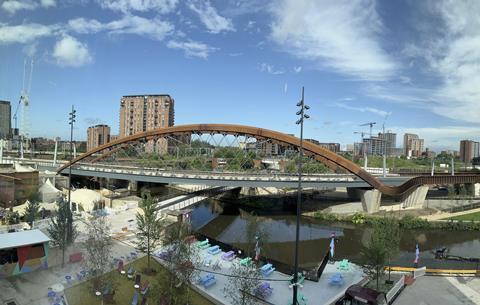
But “Manchester is booming anyway”, he says and the city’s self-confidence is fully justified. Regardless of the HS2 decision, “things are going really well anyway”.
Of the Manchester leg of HS2, he believes that, given the 2040 completion date, it was “so far in the future anyway” that people “weren’t really counting on it” for investment decisions. As a project, he believes HS2 “always got caught up in its singularity”, arguing that it should have been seen as “one part of a much more ambitious national project”.
“Yes it should have happened”, he says, but argues it should always have been seen as just “one of a number of projects” to upgrade the country’s creaking infrastructure. “But I don’t think people ever had that bigger picture”, he says.
He believes the country needs a more long-term, “30-year view” when planning its infrastructure. “The approach was very British – focusing on one mega project.”
BDP is also working on capacity improvements to the station concourse in Leeds, and says that this project has “healthy contingencies”. Comparing it to HS2, he observes that: “Ballooning costs are a symptom of the construction industry generally. Greater contingencies should be applied at the start.”
The approach was very British – focusing on one mega project.

But he believes the industry’s issues with cost and delivery also relate to the stop-start nature of investment. “If we were doing more of this stuff, we’d be better at costing it. It should be a rolling programme.”
Looking to the future, Jenkins is hopeful that “the old concept of Northern Powerhouse Rail could be back on the table”. But with substantial price tags for the various elements, he is not holding his breath: “Let’s see how that pans out.”
Rather than just focusing on the big schemes, he is also an advocate for the incremental approach. “We need to look at the smaller projects too, and nibble away at some of these problems.”
Jenkins sees implementation of the second stage of the Northern Hub and addressing the Manchester bottleneck as vital to delivering that change. “The Castlefield corridor remains a problem. Addressing the corridor would allow the chord to be used to full capacity.”
Like many, he is sceptical that much of the list of projects that Sunak reeled off at the Conservative conference will ever materialise. “Most of Sunak’s projects are at the very early stage of design. How do we get them through design, procurement, and construction?”
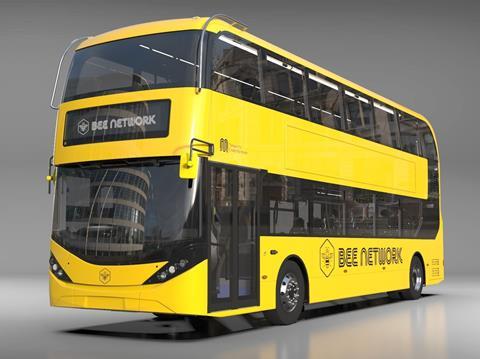
Instead, he points to a less well publicised but significant change in Great Manchester, where previously deregulated local bus companies have been put under GMCA’s control, giving Andy Burnham the power to regulate frequencies and coordinate timetables more effectively with tram and rail.
Manchester is also very engaged with doing more with existing railway stations, which Jenkins believes could become community hubs. And the city is looking at what can happen to address the last mile of people’s journeys.
Bedford sees scope to expand active travel. “We need cycle hubs with showers, covered storage areas and lockers to encourage people to cycle.”
He points to projects in Japan where station buildings have found a new lease of life through not just retail, but bookshops, drop-in medical centres and small business spaces. He wrote Network Rail’s Retail Design Manual, and believes incubator units for small businesses where people work, make and sell could add to a thriving new model for stations in the North-west.
“There are some fantastic Victorian stations – we’ve been left with a railway estate of lovely buildings. So many smaller station buildings could be community hubs.”
What is happening in northern rail?

It can be difficult to make sense of all the different proposed schemes and active rail projects underway in the North-west. The picture that emerges is sometimes of profound strategic confusion, with much of the blame clearly attributable to Westminster and Whitehall’s inability to set a clear strategic direction in national infrastructure investment.
Some projects such as the Northern Hub (also known as the Great North Rail Project), which was aimed at unblocking the rail bottleneck in central Manchester, have been partly implemented – but later stages were then cancelled by central government.
Northern Powerhouse Rail is a term made popular during the Cameron-Osbourne period, but its precise scope and objectives have shifted constantly. The long-mooted upgrade to the North’s rail network remains a rather amorphous concept.
Potentially including a new cross-Pennine line between Manchester and Leeds, its scope extends as far west as Liverpool and potentially as far north and east as Newcastle and Hull.
Chair of Transport for the North, Lord McLaughlin, responded to the HS2 decision by saying: “The cancelling of the northern leg of HS2 is naturally disappointing. It’s undeniable this will be seen as a missed opportunity for the region, and the country as whole.”
Sunak announced a string of new investments in his speech, some of which had already been completed, and others from which the government has already backtracked. Lord McLaughlin had this to say after Sunak’s speech: “The announcement of investment in the region is obviously welcome. And we will look to work with government to fully understand the implications for the North of the proposals set out today in the prime minister’s speech, and consult with our board on the best way forward in light of this new change of policy.
“There are still quite a few areas that require further clarification from the Department for Transport, which we will be seeking from them.”
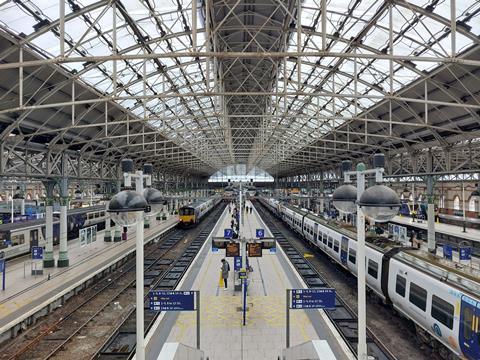
At present, fewer than 10,000 individuals residing in the northern region have the ability to reach four or more of the area’s major economic hubs within a 60-minute timeframe. This number is anticipated to increase significantly, reaching approximately 1.3 million once the Powerhouse Rail/High Speed North project is completed. But the details and funding appear to remain as unclear as ever.
Manchester currently still represents a major bottleneck in the north’s rail network. There are only two through-platforms at Manchester Piccadilly.
The project to unblock the Castlefield corridor, known as the Northern Hub Project, was announced in 2009. The first element of the project was the Orsdall Chord, allowing for through-trains from the North-east, and which was completed in 2018. But other key proposals to add two new through platforms at Manchester Piccadilly and for Oxford Road’s platforms to be extended were cancelled as recently as May this year.
Electrification is underway along several lines, including Liverpool to Manchester, but east-west movement in the north remains profoundly constrained, and is often reliant on old and slow train sets.
For a lot of Mancunians the beef is not whether HS2 is arriving or not, it was more the way that the process had come about
A property developer’s view

Tim Heatley is co-founder of Manchester-based developer, Capital & Centric.
Tim Heatley has emerged over the past decade as one of the North-west’s leading residential developers, with a strong focus on reuse and adaptation. He sees the HS2 decision as opening up new opportunities.
As a landowner and big investor in the area around the land that had been designated for the HS2 station, he says that in the short term, the cancellation may actually help stimulate some investment. “It’s kind of a strange mix of things because obviously what HS2 was doing in the present, was preventing immediate investment because there were huge safeguarding zones,” he says.
He also highlights that it was unclear exactly how HS2 would arrive into the city, so there were big question marks around whether it went underground of overground. “So as a result, it just created a huge amount of uncertainty. And I think for a lot of Mancunians the beef is not whether HS2 is arriving or not, it was more the way that the process had come about. So that’s where a lot of the frustration came from.”
Heatley is keen to see the bigger picture too: “I think there is a view that it was never as important as a lot of other things. Perversely what it does do is that it now kickstarts and releases a lot of land and it creates a lot of clarity. If it’s not coming, let’s move on and deal with what we’ve got.”
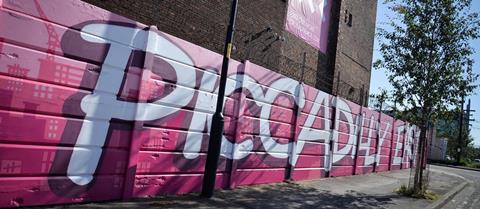
Capital & Centric had bought land around the proposed HS2 station, anticipating that its value would soar, but the cancellation has not dampened Heatley’s optimism.
“What happened was, when HS2 was announced, we decided that Piccadilly East could be the Kings Cross of the North. So we decided to buy land and buildings in that area, outside the safeguarding zone.
“You could say it’s too early to tell but I think that in some ways it might actually accelerate short-term development,” he says of the cancellation. “So hopefully that means the developers who’ve acquired the land – and we acquired it at 2010 prices – can afford to still develop and finish off the project, despite the huge construction cost inflation that we’ve experienced.”
Unlike the vast majority of other developers, Capital & Centric actively looks for old and listed buildings specifically to repurpose them. “There’s a reason why we’ve ended up with so many old buildings.” Heatley says.
“We seek them out because we know them, and we’re used to them. We’re not scared of them – we’re used to the curve balls they throw at you.”
Heatley’s company had already developed several sites around the edge of the HS2 safeguarding zone. “One of them was the listed Ducie Street Warehouse, and that’s a hotel with café, restaurants and bars,” he says. “And then we did Crusader Mill, which is a conversion, and then next to that is Phoenix, which is new-build apartments.”
All of this investment, which includes the Leonardo Hotel designed by Stephenson Hamilton Risley Studio, was made in anticipation of HS2. “It was odd because you had all of this stuff that’s been under development and then you’ve got lots of Piccadilly East where nothing’s going on and that’s because of HS2 safeguarding. It’s like an invisible swathe in the ground.”
Heatley points to the irony that HS2 had encouraged some long-term investment but also “held back the regeneration of that area quite a bit in the short term”.
Capital & Centric sold a lot of homes to owner occupiers who moved to that part of Manchester because they believed HS2 would eventually provide them with quicker access to the rest of the UK. “Well that’s changed now”, says Heatley.
“I feel for them, but I think because of what we’ve started it’s developed a critical scale and mass, and it will just crack on right up to Piccadilly train station. And there should be a huge amount of investment in that area, so that’s not entirely a bad thing – it’s just a different thing.
“As developer we took the approach that there might not be an HS2, but if it happens that’s great,” he notes. “It’s a mixed bag. There might be less hotels, there might be less office space, there might be more homes because of the shift in the mix of uses because of the shift in HS2. It should mean that, in terms of the next few years, there’s a lot more development happening in that area.”
Heatley sees no sign that Manchester’s draw is about to wane because of HS2 not arriving. “The city is attracting an international audience of very fleet of foot, well-educated young adults, who view not just Europe but the whole world as a potential place for them to live. And they’re well paid.”
Pointing to the international businesses that are increasingly based in Manchester, he says they are “seeking out the talent that’s coming out of our universities. The demand is entirely really driven by the universities.
“The universities are the beating soul and heart of the city. They just pump out really bright young things and the businesses that base themselves here are trying to access that talent. For a lot of the tech companies especially, talent is their single biggest differentiator. So that means it’s just become a big virtuous circle.”
Engineering is undergoing a paradigm change, and not a moment too soon
An engineer’s view
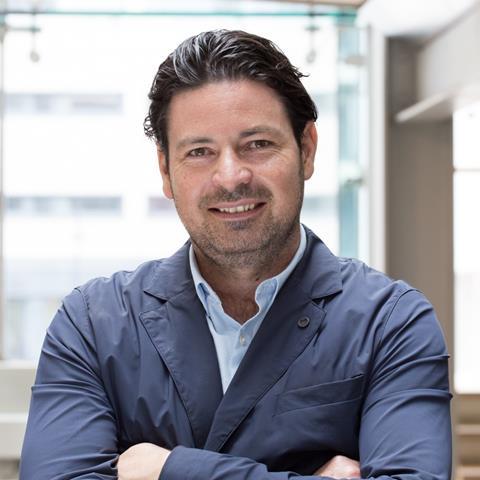
Stephen O’Malley is founder and chief executive of Civic Engineers, which spans structural and civil engineering and a range of public realm and SuDS projects. He believes the engineering community is beginning to experience a sea-change in attitudes, with the profession becoming much more focused on nature-based solutions, biophilic design and people-focused approaches.
Stephen O’Malley’s Manchester office occupies one of the most distinctive buildings in the city centre. A stone canal warehouse that his practice delivered as part of a construction management contract for Townsend Securities. This reuse of existing buildings has been a key part of Manchester’s approach to regeneration.
O’Malley is frustrated by the HS2 decision and sees it in a long line of poor governance from the UK central government. “I think the city has consistently demonstrated its nimble footedness in dealing with the sometimes erratic and sometimes downright politically backward choices that governments have made over time.”
Along with Brexit, he believes cancelling HS2 has had a negative impact on how the UK is perceived internationally. “Notwithstanding the region’s response and moving on and adapting, the broader point here is that it doesn’t present the stable conditions for investors to put money into the country, never mind just the North-west,” he says.
“When things like this fall away on the back of 15 years of consensus, I’m sure it does cause investors to think twice about putting their money into the UK.”

Civic Engineers is working with developer Make on Eden, a biophilic office development on New Bailey Street, in Salford. The scheme seeks to set new benchmarks for inner city biodiversity gain.
I think the city has consistently demonstrated its nimble footedness in dealing with the sometimes erratic and sometimes downright politically backward choices that governments have made over time.
It sits alongside a raft of public realm projects that the practice has helped develop where sustainability plays a key role.
O’Malley sees Manchester’s next big challenge as taking a step up in terms of sustainable communities, and nature-based solutions and urbanism. “Engineering is undergoing a paradigm change, and not a moment too soon,” he says.
He highlights The Avenues scheme that Civic Engineers are designing in Glasgow, which is introducing sustainable drainage systems (SuDS) to the centre of the city. He sees it as a model that Manchester should be adopting.
He also points to Ireland, where the government has committed €1.2bn over three years to promote active travel (cycling infrastructure in a meaningful way). He contrasts it with Active Travel England’s budget of £200m a year for a population 12 times the size.
O’Malley believes the city needs to expand its pedestrian and cycling infrastructure way beyond the existing urban cores, and sees the Beelines integrated transportation strategy as part of that shift.
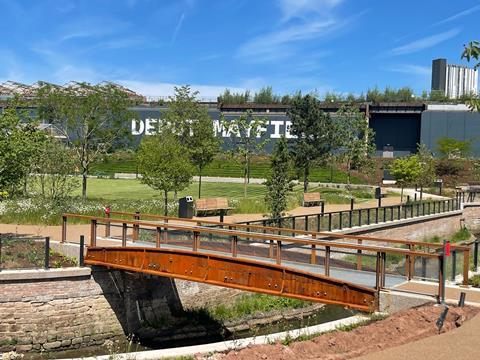
Civic Engineers has been appointed to work on the Strangeways masterplan, a 300-acre site adjacent to the River Irwell and Salford, where O’Malley hopes to apply many of these approaches. The team is being led by Avison Young, and includes Maccreanor Lavington.
Returning to HS2, he believes “it was quite a shock that it’s not going ahead because there had been such consensus, pan-political agreement on it happening, so the fact it didn’t disrupts quite a lot of things.” But he concedes that it maybe “too early to fully evaluate the impact.”
Of the mooted replacement schemes in Sunak’s speech, he displays a healthy scepticism. “We’ve seen the ministers like Mark Harper trying to highlight the benefits but, when you drill into that, some have already been announced or are already underway, and some two days later they’re rolling back and saying they’re just illustrative.”
He believes the fallout could include a further retrenchment towards looking to regional political leadership rather than Westminster. “I think what it has meant is a reinforcement of this sense among the region’s leadership that they really need to take ownership of their own destiny.
“So, rather than just surrending some of this strategic thinking to Whitehall, it’s about saying ‘what do we want’ for our region, laying that down, building the business case and then going to Whitehall with a much more locally driven plan.”
But the years of wasted resources and energy have inevitably knocked the region’s strategic momentum. Putting in place a new vision is “still in the early stages”, he concedes. “Some of the thinking has already been done – there are important parts of the jigsaw that have been evolving for decades. But refreshing that story and bringing it together in a coordinated package is going to take a bit of time.”
It would have been great to have, but there are so many other reasons development is happening in Manchester and the North-west
A returning architect’s view

James Spencer is originally from the Fylde, a coastal plain in western Lancashire. Having spent a decade working for Howells in Birmingham, including on the HS2 Curzon Street station masterplan, he has recently returned to the North-west as an associate at shedkm’s Liverpool office.
“It’s a shock for the whole country” James Spencer observes of the HS2 cancellation. But northerners are, he believes, to a degree inured against Westminster pulling the rug from under northern enterprise.
“Andy Burnham was very convinced that they should have started from the top and built down anyway,” he says.
He believes investment in infrastructure and sustainable travel is not just about the North-west, but what’s right for the whole of the UK. “Investment in infrastructure is absolutely essential to making investment happen all over the country. It needs to be part of the conversation at every level.”
But he notes that the North-West had neither banked on HS2 nor seen it as the sole key to its regional strategy. “What I’ve noticed since coming back is that, while it’s a shock to the North-west and beyond, actually HS2 doesn’t seem to be front and centre in conversations about investment and architecture.
“Of course it would have been great to have, but there are so many other reasons development is happening in Manchester and the North-west,” he notes.
“I think certainly the North-west needs investment in sustainable travel and particularly rail and that goes right across the board, whether that’s up and down the country or across it. You only have to get on a train from Liverpool to Manchester to know those services need massive investment and improvement.”
The outlook for the city and region remains bright, he argues: “What’s encouraging when you go round Manchester is there are still really exciting big projects in the area, that are happening despite any conversations about HS2 and they were happening before and they’re going to continue to happen.”
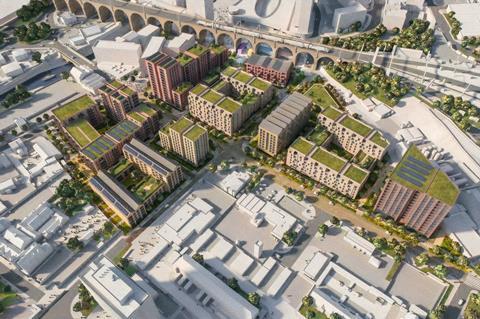
And he believes it is highly significant for the region that the success of Manchester has flowed out into the surrounding towns and cities. He points to Muse, a project shedkm is implementing with the English Cities Fund in Stockport.
“It’s evident that all these projects would benefit from more investment in projects like HS2, but equally there are still huge positives in terms of what’s happening in the North-west.
“You only have to look at CBRE’s most recent report on the region to see that Manchester is very much coming out top over the coming decade for residential investment, office investment and student accommodation. All these areas are still really positive.
“I think it’s key strength is that it’s not just a one-dimensional place. And what it has always done really well is that it has got really clear leadership, as well as having a lot going for it culturally.”
He see all these elements together as making Manchester and the wider region “a great place” to live and to be. “Its attractive to young people wanting to come to the region and stay in the region as a kind of alternative to the gravity that London often has.”
“I think if anything we’re more excited at shedkm about what is happening in the next ten years than ever, because there’s so many great things happening both in Liverpool and Manchester.”
Spencer believes Manchester in particular is at an inflection point, where liveability and quality of place and community are going to come to the foreground. “You only need to walk around Mayfield Park and see what is happening there – there’s a really amazing opportunity at this point in time to kind of reset and refocus everyone’s attention.”
He sees the city’s longstanding commitment to reuse as a huge strength and very timely in the current climate. “Muyiwa Oki put that top of the agenda looking at places like Fleetwood and focusing on the retrofit challenge and brining in sustainable travel and communities. On those sort of challenges, places like Liverpool and Manchester can lead the way in terms of lifestyle, connection to outdoor amenity and creating great places to live.”

Spencer points to Kampus and Crusader, residential developments that shedkm recently completed for Capital & Centric: “Both schemes really benefit from having retrofit and green spaces at the heart of them.
“With all those schemes there’s no doubt they benefit from being near train hubs like Piccadilly and obviously would have benefited from HS2. But I really feel that, if there is continuing investment in the wiring diagram of the place, I think it will continue to thrive.”
Spencer sees the recent emergence of high-rise towers in Manchester as part of a healthy mix that drives activity. “In that sense it’s a very different city from what it was 20 years ago.”
He says the injection of towers and residential density has contributed to an ever increasing vibrancy in the city centre. “Looking at Deansgate, one of the benefits is the injection of people. When you’re out at lunchtime or in the evenings, Manchester is buzzing with people. It’s a really thriving city centre, so in that sense I think there’s now a critical mass of people.
“In some places perhaps there has been a rush to residential growth without the surrounding infrastructure, but in other places it’s been more sustainable,” he says. “There are some very pioneering parts of the city centre – New Islington, which does have a school, family houses and the softer infrastructure that you’d expect, and it isn’t focused on cars.
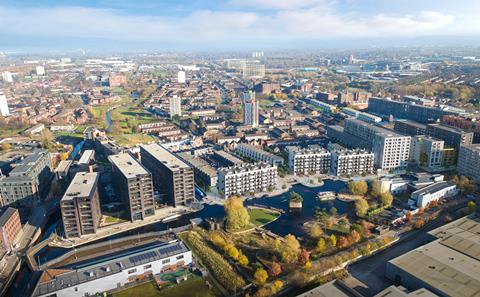
“It’s about that proper neighbourhood in an urban location and to my mind when you walk around it feels much more Scandinavian in terms of the approach of having high density homes in an urban location.”
Spencer believes it’s a model that Manchester will be seeing a lot more of as it cements its status as a city where people want to settle and raise a family. “It’s great. You sit there on the canal, you hear kids playing and you’ve got people jogging past.
“There are other areas like that, including Ancoats, that are great urban neighbourhood that are attracting people to live in an urban location.”
Spencer says that, when shedkm thinks about opportunities in Manchester now, the firm thinks about the Greater Manchester region. “We’re starting to see more development in the wider area.
“Stockport is the next place that we’re looking at, where you’re still only 15-20 minutes from the city centre on the train. There are great opportunities, with great transport connectivity on the direct train to London.
“And yet you’ve got fantastic sites with a real sense of community. Suddenly people are looking at those places as the new growth areas, but I think the important thing is sustainable healthy growth.”
“It’s not just about residential but all those other things that come with it,” says Spencer. ”I think there has been a huge shift in the last few years, learning where you get that healthy growth.”
On the wider economy, Spencer sees a complex web of activity driving investment. “There are lots of different strands to that – transport is important.”
He also points to the well-documented and still vital draw of football and culture. “I think why places like Manchester and Liverpool are thriving is becuase people see the sport and culture they have in abundance everywhere. And I think those are natural draws for young people in particular to come in. And then the city prospers off that.”
Like many others in the city region, Spencer comes back to leadership. “There’s a really clear leadership and planning system that people can work with and it’s a really can do sort of place – that’s another real benefit for people coming in.
“If you look at Manchester and Liverpool, there’s new leadership and they’re setting out their stalls. They’ve got some great people in place in terms of the planning and development sides.”

“What’s exciting about the next chapter is, after the big rush for resi, the next piece is about sustainable retrofit and communities and kind of growing up a bit in terms of that sustainable growth. That’s what I’m really quite existed about – there is loads of natural opportunity for that in the North-west.”
Spencer points to the thriving town of Altrincham as a model for how the wider region could develop: “Altrincham is another place that’s just fabulous. It’s got the metro, it’s got culture and food at the heart of it and it’s just thriving. It’s just gone from strength to strength.
“It’s a good time to be in the North-west,” he concludes. “HS2 is a setback, there’s no doubt about that, but it’s a setback for everybody in the UK, because HS2 has never been about getting from Birmingham to London a little bit quicker.
“It has always been about that bigger, joined-up message of an interconnected, modern transport network. It’s not about that small piece.”
Looking to the future, Spencer makes a plea for a new, clear plan and some real certainty: “I do hope the government can quickly look at proper opportunities for reinvestment in transport in the North. Whatever that’s titled as, it’s obvious that investment provides developers with that certainty to move on with projects and everyone hates uncertainty.”
But there’s no sense that Spencer or others in the North-west will be waiting for Westminster to give their ambitions the greenlight – the region is increasingly taking its future into its own hands.
See ��ɫ����TV later this week for an explainer about HS2 land sales




















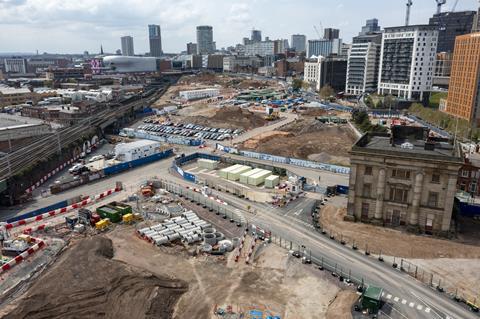






No comments yet